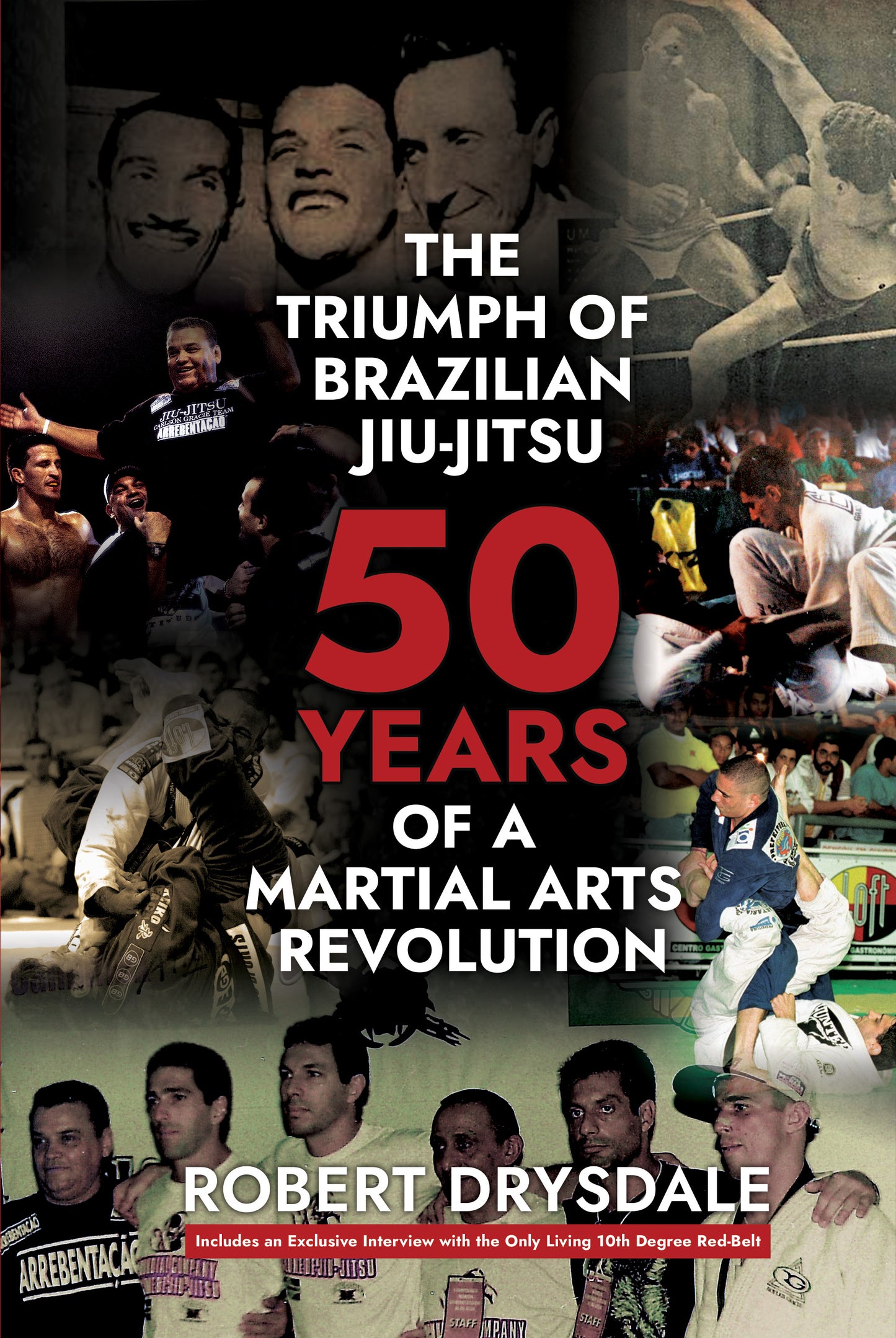Zenith Jiu Jitsu
5) The Triumph of Brazilian Jiu Jitsu 50 years of a Martial Arts Revolution.
5) The Triumph of Brazilian Jiu Jitsu 50 years of a Martial Arts Revolution.
Couldn't load pickup availability
About this book:
This book tells the history and evolution of BJJ through over 500 rare images. From pre-Meiji Japan, to Jigoro Kano and the foundation of judo, to Japanese immigration to Brazil, to the introduction of pre-War judo to the Gracie family and all the way to the transformation the art underwent in the South-Zone of Rio as various characters and social phenomena intertiwned to give shape to the worldwide phenomenon that we now refer to as "Brazilian jiu-jitsu."
Summary:
In 1993 Royce Gracie led a martial-arts revolution and brought the Brazilian version of jiu-jitsu to the worlds attention. As a result, giving birth to not only the UFC, but also what had been brewing in the South-Zone of Rio for the past two decades: The art that would come to be known as "Brazilian Jiu-Jitsu." But what is BJJ? Is it nothing but a variant of judo? Or is it, as Helio Gracie claimed, something he "invented" due to his frail size? The reader may also want to know why is it that it is practiced under so many different formats: is it a form of self-defense? Or a sportive practice? Or is it an art for vale-tudo (MMA)? This book discusses the importance of the 1975 ruleset as a turning point in BJJ history and loosely separates the history of jiu-jitsu in Brazil into two stages: before and after the 1975 ruleset. The author of Opening Closed Guard and The Rise and Evolution of Brazilian Jiu-Jitsu makes use of hundreds of archival pictures and documents to argue that, prior to the 1975 ruleset, BJJ did not have the ground orientation for which it is best known today. Moreover, that what the Gracie brothers Carlos and Helio were teaching was a self-defense model with elements of pre-War judo (pre-Olympic), not so unlike various other "jiu-jitsu" schools around the world that were not absorbed by competitive judo before and after World War 2. As the author argues, it was only after the formulation of the 1975 ruleset that jiu-jitsu in Brazil truly began to take the ground orientation for which it is best known today. The author also argues that the experience that the first-wave of BJJ practitioners (1930s-1975) had in vale-tudo rings inspired them to radically reshaped their understanding of combat towards the ground. First, by distancing themselves from the self-defense and private lesson model of the original Gracie Jiu-Jitsu Academy. And second, by distancing themselves from judo in technical terms (by emphasizing the ground-work or ne-waza), while simultaneously copying judo in terms of its logistical structure and by running tournaments as an outlet for growth and evolution. The result of this ground orientation, thanks to the 1975 ruleset, is precisely what gave BJJ its advantage over other martial-arts during the 90s and after Royce Gracie and that first UFC. This book also argues that it was a misunderstanding of combat by Helio Gracie that led to the sophistication of "the guard" position and that this same misunderstanding had the unforeseen side-effect of opening up endless creative possibilities for BJJ as a ground oriented art. These elements and others, when combined, led to the jiu-jitsu craze we are experiencing today as BJJ aims to surpass its predecessor and become "the most practiced martial-art in the world." It is in honor and celebration of this triumph that this book is written.
Bonus Material: This book also contains an exclusive interview with the only living 10th degree red-belt as well as a statistically formulated list of BJJ's top 40 most successful competitors of all time.
Share


